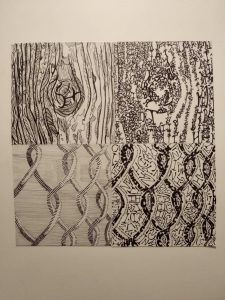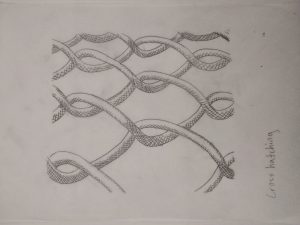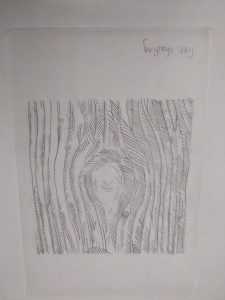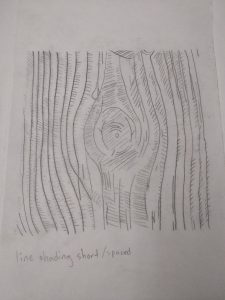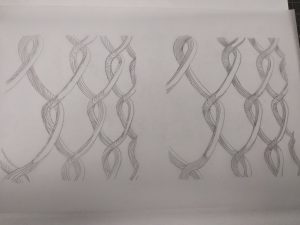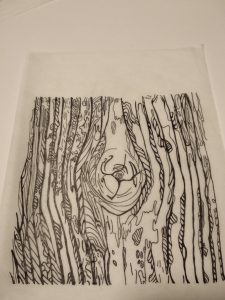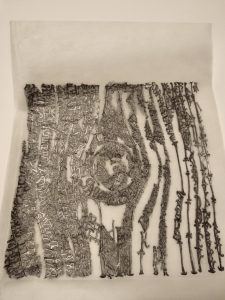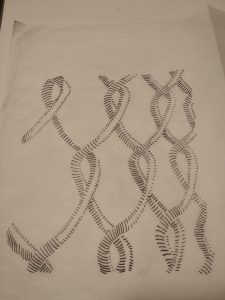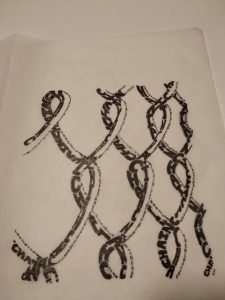Final sketches were developed and defined furthered with ink and transferred onto bristol. Backgrounds were added for the line and type pattern.
Thoughts on this project:
While the process of thinking up backgrounds for the pattern picture nearly drove me crazy, the feedback from class was incredibly helpful in overcoming thischallenge. I learned to not follow the traditional contours of pictures, that what we see isn’t really a “line” but a defined aspect that had been enforced by a background.
As for the technical aspect of this project, I could have definitely scaled my pieces much better and ahead of time. Not all the pieces are exactly 5×5 inches, as I made the mistake of not checking the dimensions before inking everything. For the next project I hope to remember that small, yet vital detail.

